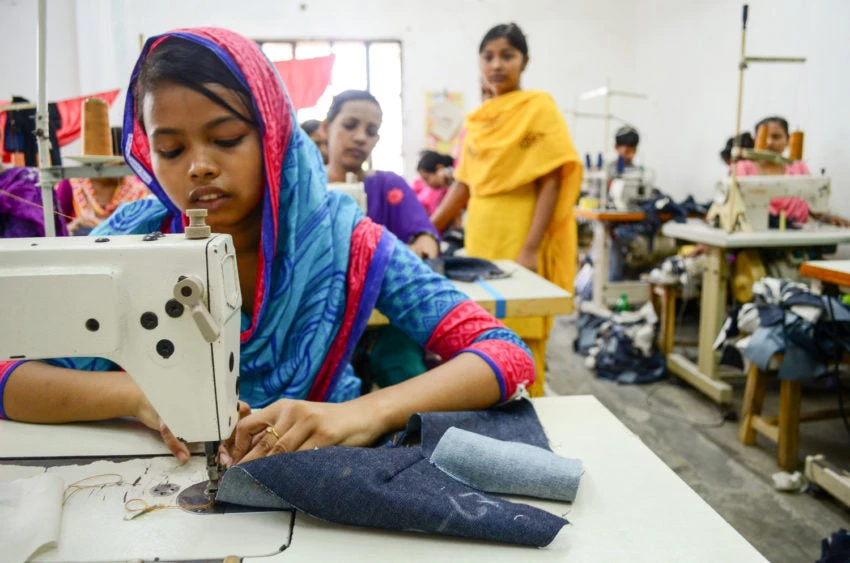 Adolescent girls working at a ready-made garments factory in Dhaka, Bangladesh.
Adolescent girls working at a ready-made garments factory in Dhaka, Bangladesh.
This effort is urgent says a seminal countrywide analysis, which shows that while improving, adolescent girls’ nutrition remains concerning in Bangladesh.
Equally worrisome are higher levels of undernutrition among pregnant adolescents aged 15 to 19 and poor dietary diversity.
Financed through the World Bank’s South Asia Food and Nutrition Security Initiative (SAFANSI), the study examines regional and urban-rural patterns of undernutrition and overnutrition, dietary diversity, household food security, and the growth dynamics of adolescent girls aged 10 to 19.
This work synthesizes data collected over six years to help policymakers better understand how to prioritize better nutrition programs, especially for adolescent girls, break the inter-generational cycle of malnutrition and contribute to the human capital and economic growth of the country.
Almost 28 percent of early adolescent Bangladeshi girls are severely or moderately thin, and nutrition outcomes vary strikingly between rural and urban areas.
Six cost-effective interventions to reduce malnutrition in Bangladesh
The Government of Bangladesh launched the National Adolescent Health Strategy 2017–30 to improve adolescent health outcomes.
To support this work, another World Bank report highlights six prioritized interventions targeted at adolescent boys and girls in secondary schools and community clubs for out-of-school adolescent girls that are proven to reduce undernutrition:
#1: Deworming has the highest return on investment. Less than $1 invested per adolescent in deworming returns $72 for school-going adolescents and $46 in out-of-school adolescents .Heavy worm infestation inhibits the body from absorbing nutrients, decreases immunity to illnesses, and reduces school attendance. A minimal cost can return huge benefits.
#2: Weekly iron-folic acid (IFA) supplements cost less than $1.50 per school-going adolescent and less than $2 per out-of-school adolescent. The prevalence of anemia among adolescent girls is over 50 percent. IFA supplementation for all adolescent girls is a highly cost-effective investment to reduce anemia and improve their health and school performance.
#3: Multiple micronutrient supplements (MMS) costs $4 per adolescent annually for in-school and out-of-school adolescents. Investing $1 per year for MMS for each adolescent would return 17 times the cost for school-going adolescents and 10 times the cost for out-of-school adolescents. Inadequate intake of critical micronutrients can impair brain development and increase infection.
#4: School-based nutrition education for dietary diversity and physical activities costs $4 per adolescent and is extremely important to reduce undernutrition and obesity. A healthy lifestyle delays the onset of diseases and increases productivity. Education helps to establish good nutrition, healthy eating, and regular physical activity habits among children, teachers, and guardians.
#5: Mid-day meals or fortified snacks at schools cost $50 per adolescent a year—less than 20 cents per adolescent a day. Many students go to school hungry. A nutrient-rich meal will provide the necessary food and nutrition students need, which can also improve their school performance. The main cost of the program is for mid-day meals.
#6: Education and livelihood training to reduce child marriage costs $42 per adolescent with a return 10 times the cost.Bangladesh has the highest prevalence of child marriage in South Asia—65 percent of girls marry before the age of 18. Adolescent pregnancy increases the health risks for teenage mothers and their unborn babies. The children of teenagers are at greater risk of poor nutrition, increasing the risk of intergenerational undernutrition.
Education helps to establish good nutrition, healthy eating, and regular physical activity habits among children, teachers, and guardians.
The well-being of all adolescents is critical for a prosperous Bangladesh.



Join the Conversation